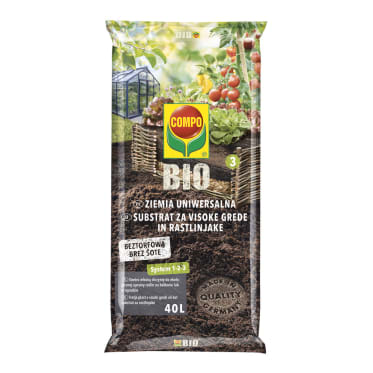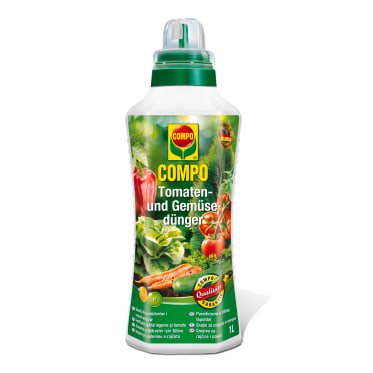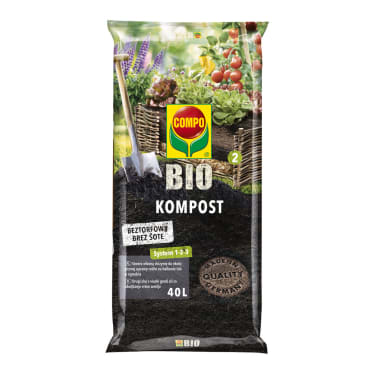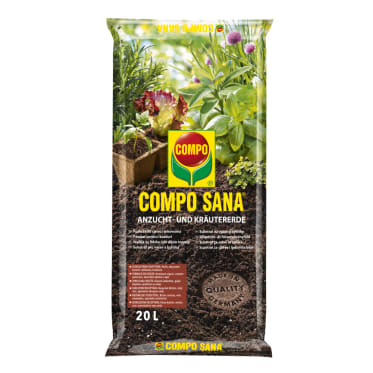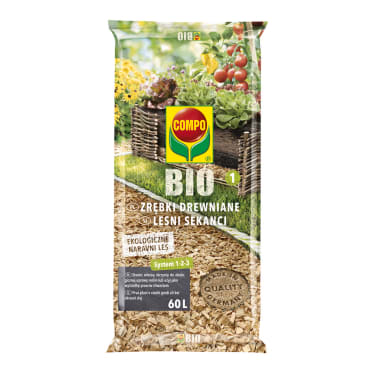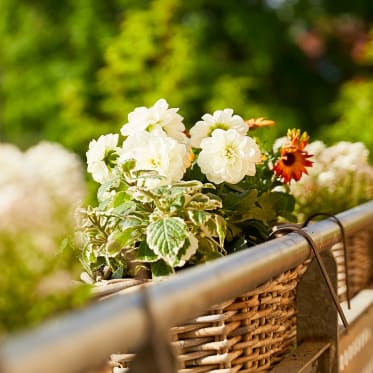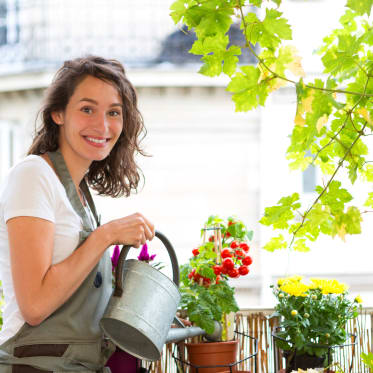Frequent search terms
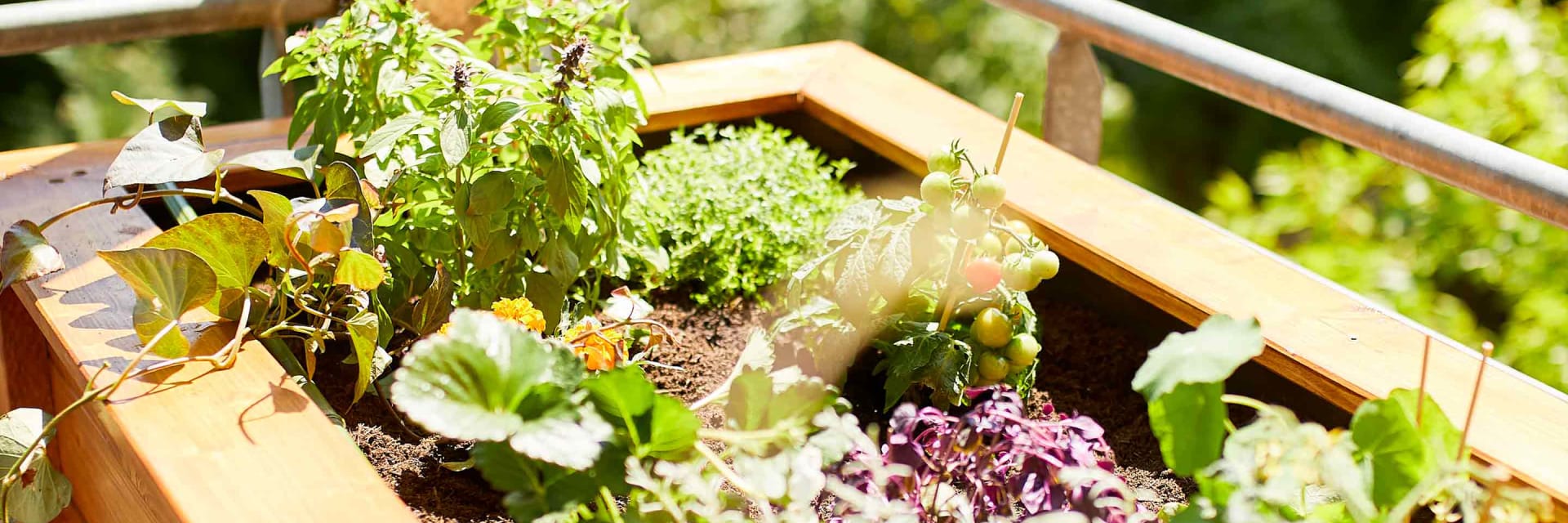
- COMPO
- Guide
- Plant Care
- Herbs, fruits and vegetables
- Planting raised beds – ideas and planting tips
Tomatoes and cucumbers, etc.
Planting raised beds
Be it on the balcony, in a back garden between stones and rubble or in an allotment – raised beds allow you to produce a rich vegetable harvest in almost any location. This article tells you which vegetables are perfect for a raised bed and when you should plant them.
Table of content

Location and filling, etc.
A raised bed in a sunny location is ideal for growing a wide variety of vegetables. It doesn't matter whether it's a cucumber, tomato, lettuce, potato or cabbage – they all love plenty of warmth and light. That's why you should make sure that you erect your raised bed in a sunny location. Ideally, your raised bed should also be slightly sheltered from the wind or in the best case even covered. After all, many heat-loving vegetables do not appreciate summer rainfall. Tomatoes in particular are extremely keen on locations sheltered from the rain.
Incidentally, one big advantage of raised beds is that you don't have to worry about the soil conditions. Since you're the one who fills your raised bed, you can create the best conditions for your plants. That's why our article on filling raised beds shows you what material the layers of your raised bed should consist of. If you have the right foundation, you can even put the raised bed on a concrete surface, such as in front of an unused garage, and enjoy a rich summer harvest – as long as the location is sunny and sheltered from the wind.
Planting raised beds – which plants are suitable for a raised bed?
You can basically plant anything you like in a raised bed. Having said that, raised beds are best suited to low-growing compact plants or plants that tend to grow downwards, such as strawberries, lettuces, carrots, kohlrabi, peppers or cucumbers. Special bush or hanging tomatoes also make for excellent raised bed plants. Various herbs and edible flowers, such as basil, borage, nasturtium or marigolds, will also thrive in a raised bed.
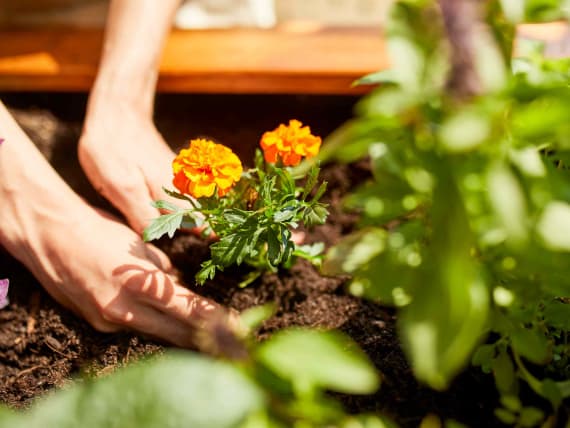
Pumpkin, courgette or large cabbage plants like cauliflower can also be planted in a raised bed. But if you do, it's important to think about the width of your plants. For example, even though it looked quite small when it was bought in May, a pumpkin can easily fill a square metre.
In addition to the width, the height of your plants is also a factor. Although it's certainly possible to let a few stake tomatoes grow two metres high in a low raised bed, it makes more sense to go for small bush or hanging tomato varieties from the outset in raised beds that are more than half a metre high. Irrespective of this, when you plant your raised bed you should make sure that larger plants do not stop the light from reaching smaller ones or obstruct harvesting and caring for them.
With that in mind, the first thing to do before you plant your raised bed is to think about which plants you definitely want to put in the raised bed and how much space you need to allow for them. And when you do this, remember that the growth habit depends not only on plant species but also on the particular variety.
.jpg)
Planting raised beds – planting tips
If your raised bed is exposed, it makes sense to put the largest plants in the middle. Then the medium-sized vegetable plants follow and finally the smallest, hanging or climbing plants grow at the edge. Strawberry, nasturtium or cucumber plants are especially good candidates for planting around the edges. If you position your raised bed against a wall, the tallest plants should be planted at the very back next to the wall. In front of those come medium-sized vegetable plants and you can put plants that stay really low or hang downwards at the forward edge.
Vegetable plants with a high and those with a low nutrient uptake
In addition to the natural height and width of your plants, you can also take a look at each plant's nutrient requirements. While pumpkins, artichokes, potatoes, melons or red cabbages have an extremely good appetite and need a lot of nutrients, most vegetable plants such as chard, rhubarb, kohlrabi or Jerusalem artichoke are content with a little less fertiliser. We distinguish here between plants with a high nutrient uptake and those with a medium nutrient uptake. Classed as plants with a low nutrient uptake, beans, lamb's lettuce, small radishes and many Mediterranean herbs require very few nutrients.
Ideally, you should put plants that have similar nutrient requirements in your raised bed. In other words, plants with a high and medium nutrient uptake like tomatoes, potatoes and cucumbers grow best in a well-fertilised, humus-rich raised bed, while lamb's lettuce, small radishes and beans will feel more at home in soil with fewer nutrients. Having said that, you can also mix and match, i.e. a plant with a low nutrient uptake can also be placed between those with a high nutrient uptake in a well-fertilised bed. Simply leave out the plant with a low nutrient uptake when you re-fertilise with liquid fertiliser. However, you should give it and the other plants enough space so that they don't get in each other's way. Otherwise, plants with a high nutrient uptake could drive those with a low one into the corner.
Planting tips:
Since certain diseases and pests (e.g. clubroot or root nematodes) focus on plant families, it's advisable to allow three to four years to pass before you replant a cruciferous vegetable (like broccoli) again.
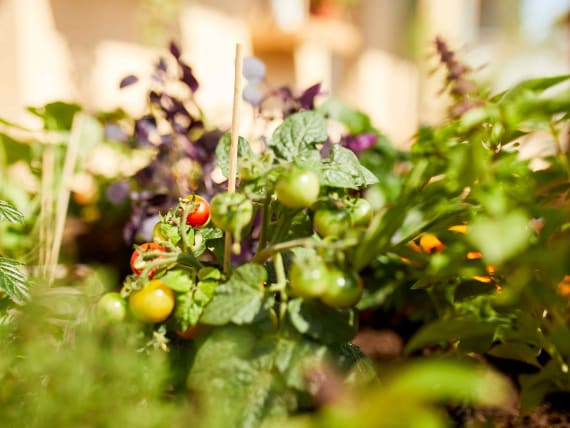
When can you plant your raised bed?
Exactly when you plant your raised bed depends a little on which plants you want to put in your raised bed – broad beans, spinach, carrots or parsnips can be sown in March, depending on the weather. In April, cabbage plants like cauliflower, broccoli, kohlrabi, Brussels sprouts or beetroot can then also be added to the raised bed.
But anyone who wants to grow classic fruit vegetables like tomatoes, cucumbers, peppers, melons, pumpkins, courgettes or aubergines in the raised bed will need to exercise a little patience until mid-May. Plants that are susceptible to frost can only move into the bed when any risk of late frosts has passed.
That's why fruit vegetables – unlike spinach, small radishes or carrots – should not be sown directly in the bed, i.e. it would otherwise take a long time before they could be harvested. Instead, depending on species the plants are grown indoors on the windowsill between February and April until they can move outside in May. Alternatively, if you don't have enough space or time, or if you live in a flat with little light, you will find small 'ready-to-use' plants that you can put directly in the raised bed after buying them in garden centres or DIY stores.
Autumn raised beds – what can you plant?
Once the raised bed or parts of it have been harvested in August, you can fill the empty spaces with autumn and winter vegetables such as Brussels sprouts or curly kale. If tomatoes or cucumbers can still be harvested until well into September thanks to warmer weather, late planting of lamb's lettuce, winter purslane or winter cress is also possible in October. Your raised bed can also be used for storing root and tuber vegetables such as carrots and potatoes over the autumn and winter. Using your raised bed for storage is a good idea in cases where it is protected from the rain, such as on a patio or balcony.

How do I plant my raised bed?
Gardeners who have three or four raised beds in their garden can think about filling them with 'only' two to five vegetable plants at a time, which then move to another raised bed year after year. This form of rotation sees the crop change beds every year. For example, the first raised bed could be used for plants with a medium/high nutrient uptake (such as potatoes, cucumbers and peppers), the second for plants with a medium nutrient uptake (such as carrots, leeks, kohlrabi, peas or endives), and the third for plants with a low nutrient uptake (such as small radishes, spinach or lamb's lettuce).
If you have a fourth raised bed, then as with normal crop rotation you can plant green manure consisting of lupins and clover so as to return nutrients to the soil. All the plants then move to the next bed in the following year, so that the vegetable plants with a high nutrient uptake move to the freshly fertilised bed and those with a low nutrient uptake to the bed that contained plants with a medium nutrient uptake. Alternatively, before planting you can fill the bed with a generous portion of compost and fresh vegetable soil that's high in nutrients.
Such an elaborate vegetable growing plan only makes sense if you have enough space available, however. Gardeners with a balcony or small garden often have only one or two raised beds at their disposal. And normally, these two beds should accommodate as many different vegetable plants as possible – so that in addition to carrots, spinach and leeks, you can also harvest tomatoes, cucumbers and strawberries in the summer. This is usually possible without any problems as long as you allow for enough space between the plants, take the growth habit into account and consider respective needs. Position large plants so that they don't prevent the light from reaching smaller ones and where possible combine plants with similar nutrient requirements or ensure that you leave out less hungry vegetable plants when fertilising them.
Ideas for planting a raised bed
You can grow virtually any vegetable plant you could wish for in the summer on a sunny raised bed (width 1.50 m, length 1.80-2.00 m, and height 40 cm) that is placed against a sheltered building wall with a canopy! But for plants with a high nutrient uptake, you should always use plenty of compost and special vegetable soil that will provide the plants with sufficient nutrients for their growth.
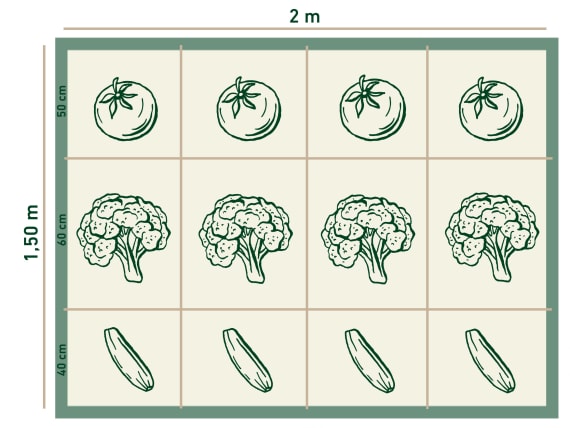
For the summer
What do you think about planting four to five large stake tomato (solanaceous) plants in the back row, for example? In front of that, four summer broccoli (cruciferous) plants and at the front four to five mini cucumbers can grow down over the edge of the raised bed.
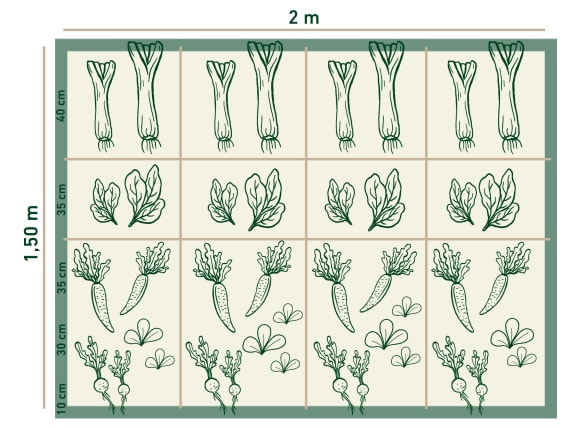
For the autumn:
A combination of plants with a medium to low nutrient uptake would be conceivable as plants for the autumn (but also for the summer) season. Nine to ten leeks, which take up the most space, could go right at the back. A row of eight to ten spinach plants could be grown in front of them. Two rows of carrots and a row of lamb's lettuce could follow. And you could finish off by adding a row of small radishes.
Planting raised beds – four tips
Pay attention to size
If your raised bed is exposed, put larger plants in the middle. If your raised bed is against a wall, put larger plants towards the back near the wall.
Allow sufficient space
Over time, young plants will not only grow taller but also wider – so they need enough space to develop.
Consider nutrient requirements
Combine plants with similar nutrient requirements.
Do not grow plant families one after the other
To prevent pests that focus on certain plant families, it can help to allow three to four years to pass between the cultivation of plants from one family.
Irrespective of whether you plant one raised bed or several, these four tips will help you care for your plants and enjoy a rich harvest. We wish you every success and lots of fun!
Products to help you grow vegetables
This might also interest you

